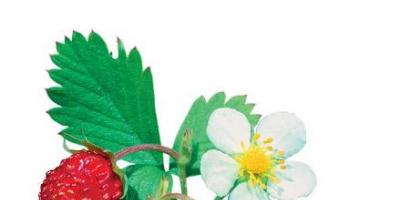GRAPE
People have been growing grapes for several millennia. Back in the 5th millennium BC, it was known in Asia Minor, Syria and Palestine. Then it began to be cultivated in the states of Mesopotamia, Assyria and Babylon, as well as Egypt.
In the wild, grape stems twine around trees like vines. This property of grapes is still used today. Wild grape bushes are used to make decorative hedges.
Wild grapes have small, sour berries. To keep the grapes large and sweet, winegrowers trim off excess branches. Nutrients are not wasted on new stems and leaves, but are supplied to ripening berries. Cultivated grapes were obtained as a result of numerous crossings of wild grapes growing in Central and Southern Europe, as well as in Asia Minor.
A special role was given to grapes in Ancient Greece. Already at that time, people learned to extract juice and wine from grapes.
Grapes spread throughout Europe further and further north. It came to Russia at the end of the 16th century. The first vineyard was founded at the monastery in Astrakhan. Peter I issued a decree on the cultivation of grapes in the villages of the Don Cossacks.
Grapes are eaten fresh, compotes and juices are prepared from them. The properties of the berries are also preserved in dried fruits. In ancient times, dried grapes (raisins) were taken with them on military campaigns.
Depending on the variety, grape berries can be round or elongated, as well as red, dark blue or white-green. In total, more than 5 thousand varieties of grapes are known in the world.
Even the temperature at which it grows affects the taste of grapes. If it is dry and warm, the berries turn out sweet and juicy, and if it is cold, the grapes become sour.
The best grape varieties are grown on the slopes of hills and mountains. It is especially good to plant these berries on the eastern slopes, which are warmed by the sun's rays in the morning. The most famous vineyards are located in France, Italy, Spain and Crimea.
MYSTERY
On a string-stalk
A pile of sweet berries -
On a large platter.
(Grapes) FOLK SIGNS Frequent and cold rains - no bees, no grapes.
STRAWBERRY
I was walking in the forest, carrying strawberries
I looked for it, collected it.
I'll bring it to kindergarten -
I'll treat all the guys.
(A. Brodsky)  Strawberry bushes grow in forests, forest ravines, thickets of bushes, and in river and stream valleys. The stems with bright red berries droop all the way to the ground - hence the name of the plant. Strawberries are an incredibly aromatic and tasty berry. Its scientific name is “fragaria”, which means “fragrant”.
Strawberry bushes grow in forests, forest ravines, thickets of bushes, and in river and stream valleys. The stems with bright red berries droop all the way to the ground - hence the name of the plant. Strawberries are an incredibly aromatic and tasty berry. Its scientific name is “fragaria”, which means “fragrant”.
Strawberries are often called strawberries. In fact, strawberries, although similar to wild strawberries, are a different type of plant. Strawberries have small berries, so they are not used for breeding.
To collect wild strawberries, you will have to work hard. The berries hid under green leaves. You need to bend down to the ground, lift the leaves - then you will notice the strawberries.
Garden strawberries were developed in the 18th century. The French officer A. Frezier brought five strawberry bushes from Chile to Europe. They were planted next to a Virginia strawberry bush from North America. This is how garden strawberries appeared. Currently, about two thousand of its varieties are known; more than a million tons of berries are harvested every year in the world.
People nicknamed strawberries the “queen of berries” for a reason. It contains many useful substances and vitamins. Medicinal decoctions of dried berries and strawberry leaves are drunk for sore throats and colds.
Peasants in Rus' associated July 9 with the Tikhvin Icon of the Mother of God. It was as if she had appeared after long wanderings in the strawberry fields, where the city of Tikhvin now stands. If you eat a glass of strawberries on this day, you will recharge yourself with energy for the whole year.
PUZZLES
Like on a stitch, on a path
I see scarlet earrings.
I found this earring.
I bent down for one,
And I came across ten!
(Strawberry) FOLK SIGNS
Strawberries are red - don’t waste oats in vain.
When they mow, they bring strawberries home.
RASPBERRIES
Full cart
Raspberry berries
I'll bring it home.
I'll make some jam,
There will be a treat
For friends in winter!
(T. Shorygina)  In the temperate zone of Eurasia, in the European part of Russia, in Siberia and the Far East, common raspberries are found. Raspberry bushes reach a height of two meters.
In the temperate zone of Eurasia, in the European part of Russia, in Siberia and the Far East, common raspberries are found. Raspberry bushes reach a height of two meters.
Raspberry thickets can be seen in forest clearings and edges. Berries, like red lanterns, strewn the branches. The berries on the upper branches, closer to the sun, ripen earlier than others.
In the first year of life, raspberries have grassy shoots with thin thorns. There are no flowers or fruits yet. In the second year, the stems become woody and white flowers form on them, and then small green berries appear. They sing and turn red.
Raspberry fruits are collected from small drupes that are pressed tightly together. Each small drupe contains a hard seed. Forest animals and birds eat raspberries with pleasure. The bear especially loves her.
Raspberries contain sugars, vitamins, organic acids, pectin and tannins. Tea made from dried fruits is a diaphoretic and antipyretic. An infusion is brewed from the leaves - “raspberry tea”, which is used to gargle for sore throat and inflammation of the larynx. Raspberry jam is very useful for colds.
On August 17, Avdotya Day, peasants went into the forest to pick raspberries. On this day, guys do not choose brides - they are all as beautiful as a red raspberry. A guy in a raspberry patch will be lost in thought, and then a girl will appear to him; he will rush to hug her, and instead of the beautiful maiden there will be a raspberry bush, or even a bear feasting on raspberries.
Peasants determined the date of sowing rye based on the degree of ripening of raspberries. Raspberries were collected for future use, dried, and prepared into jam and juices.
MYSTERY
Red beads hang, they look at us from the bushes,
These children, birds and bears love beads very much.
(Raspberry) PROVERBS AND SAYINGS
Avdotya Malinovka – forest raspberries are ripening.
If you didn’t put a raspberry in your mouth, you never saw life.
E. Emelyanova
Title: Buy the book "Tell children about garden berries": feed_id: 5296 pattern_id: 2266 book_author: Emelyanova E. book_name: Tell children about garden berries Buy the book “Tell children about garden berries” Emelyanova E.
GRAPE
People have been growing grapes for several millennia. Back in the 5th millennium BC, it was known in Asia Minor, Syria and Palestine. Then it began to be cultivated in the states of Mesopotamia, Assyria and Babylon, as well as Egypt.
In the wild, grape stems twine around trees like vines. This property of grapes is still used today. Wild grape bushes are used to make decorative hedges.
Wild grapes have small, sour berries. To keep the grapes large and sweet, winegrowers trim off excess branches. Nutrients are not wasted on new stems and leaves, but are supplied to ripening berries. Cultivated grapes were obtained as a result of numerous crossings of wild grapes growing in Central and Southern Europe, as well as in Asia Minor.
A special role was given to grapes in Ancient Greece. Already at that time, people learned to extract juice and wine from grapes.
Grapes are eaten fresh, compotes and juices are prepared from them. The properties of the berries are also preserved in dried fruits. In ancient times, dried grapes (raisins) were taken with them on military campaigns.
Depending on the variety, grape berries can be round or elongated, as well as red, dark blue or white-green. In total, more than 5 thousand varieties of grapes are known in the world.
Even the temperature at which it grows affects the taste of grapes. If it is dry and warm, the berries turn out sweet and juicy, and if it is cold, the grapes become sour.
The best grape varieties are grown on the slopes of hills and mountains. It is especially good to plant these berries on the eastern slopes, which are warmed by the sun's rays in the morning. The most famous vineyards are located in France, Italy, Spain and Crimea.
MYSTERY
On a string-stalk
Pile of sweet berries-
On a large platter.
(Grape) FOLK SIGNS Frequent and cold rains - no bees, no grapes.
STRAWBERRY
I was walking in the forest, carrying strawberries
I looked for it, collected it.
I'll bring it to kindergarten -
I'll treat all the guys.
(A. Brodsky)
Strawberry bushes grow in forests, forest ravines, thickets of bushes, and in river and stream valleys. The stems with bright red berries droop all the way to the ground - hence the name of the plant. Strawberries are an incredibly aromatic and tasty berry. Its scientific name is “fragaria”, which means “fragrant”.
Strawberries are often called strawberries. In fact, strawberries, although similar to wild strawberries, are a different type of plant. Strawberries have small berries, so they are not used for breeding.
To collect wild strawberries, you will have to work hard. The berries hid under green leaves. You need to bend down to the ground, lift the leaves - then you will notice the strawberries.
Garden strawberries were developed in the 18th century. The French officer A. Frezier brought five strawberry bushes from Chile to Europe. They were planted next to a Virginia strawberry bush from North America. This is how garden strawberries appeared. Currently, about two thousand of its varieties are known; more than a million tons of berries are harvested every year in the world.
People nicknamed strawberries the “queen of berries” for a reason. It contains many useful substances and vitamins. Medicinal decoctions of dried berries and strawberry leaves are drunk for sore throats and colds.
Peasants in Rus' associated July 9 with the Tikhvin Icon of the Mother of God. It was as if she had appeared after long wanderings in the strawberry fields, where the city of Tikhvin now stands. If you eat a glass of strawberries on this day, you will recharge yourself with energy for the whole year.
PUZZLES
Like on a stitch, on a path
I see scarlet earrings.
I found this earring.
I bent down for one,
And I came across ten!
(Strawberry) FOLK SIGNS
Strawberries are red - don’t waste oats in vain.
When they mow, they bring strawberries home.Full cart
Raspberry berries
I'll bring it home.
I'll make some jam,
There will be a treat
For friends in winter!
(T. Shorygina)
In the temperate zone of Eurasia, in the European part of Russia, in Siberia and the Far East, common raspberries are found. Raspberry bushes reach a height of two meters.
Raspberry thickets can be seen in forest clearings and edges. Berries, like red lanterns, strewn the branches. The berries on the upper branches, closer to the sun, ripen earlier than others.
In the first year of life, raspberries have grassy shoots with thin thorns. There are no flowers or fruits yet. In the second year, the stems become woody and white flowers form on them, and then small green berries appear. They sing and turn red.
Raspberry fruits are collected from small drupes that are pressed tightly together. Each small drupe contains a hard seed. Forest animals and birds eat raspberries with pleasure. The bear especially loves her.
On August 17, Avdotya Day, peasants went into the forest to pick raspberries. On this day, guys do not choose brides - they are all as beautiful as a red raspberry. A guy in a raspberry patch will be lost in thought, and then a girl will appear to him; he will rush to hug her, and instead of the beautiful maiden there will be a raspberry bush, or even a bear feasting on raspberries.
Peasants determined the date of sowing rye based on the degree of ripening of raspberries. Raspberries were collected for future use, dried, and prepared into jam and juices.
MYSTERY
Red beads hang, they look at us from the bushes,
These children, birds and bears love beads very much.
(Raspberries) PROVERBS AND SAYINGS
Avdotya Malinovka – forest raspberries are ripening.
If you didn’t put a raspberry in your mouth, you never saw life.The berry tastes good
But go ahead and rip it off
A bush with thorns, like a hedgehog -
So it's called blackberry.
Blackberries are similar to raspberries - black with a bluish bloom, sweet and sour. But with raspberries, ripe fruits are easily torn from the receptacle, leaving the berry in your hands, hollow inside. A blackberry is not so easy to pick from a bush - the fruit is separated from the branch along with the receptacle.
Blackberries are common in Eurasia and North America. Grows in damp forests, forest ravines, in river and stream valleys. Blackberry bushes are taller than raspberries - up to 2 meters, and very prickly, hence the name of the plant. Blackberries often grow strongly, forming impenetrable thickets together with other shrubs.
Blackberries contain sugars and organic acids, carotene, vitamins B and C. The berries are used fresh and processed. An infusion of leaves is used for colds, intestinal disorders, and sore throat. Fragrant tea made from dried fruits and leaves is beneficial.
Garden blackberries are grown on private plots. Blackberry varieties have been developed that have no thorns on their stems. However, they do not tolerate temperature fluctuations well and do not take root well in cold climates.
Cultivated blackberries are grown mainly by amateur gardeners. The best varieties of blackberries - “Texas” and “Izobilnaya” - were bred by the famous Russian scientist I.V. Michurin.
There are 500 varieties of blackberries, more than raspberries. But breeders are unable to cross raspberries with blackberries. Scientists managed to obtain a hybrid of blackberries with another relative - dewberry, which is also called creeping blackberry. The dewberries have even more thorns than the blackberries, but the berries are very tasty.
MYSTERY
Dressed like a hedgehog,
And it crawls like a snake.
(Blackberry)
Early spring
This year
I planted it myself
My cherry.
Now take a look:
Overtaking me
Grew up over the summer
My cherry!
(G. Boyko)
In ancient times, cherry was considered a magical tree with unlimited healing properties, and it was recommended to rub sore spots on the trunk. The ash left after burning a cherry tree was also considered healing. In Europe, cherries began to be grown in the 1st century AD. Much later it was brought to Rus'. The first cherry orchards appeared in our country in the 15th century.
Cherries have dark red, sour fruits. They even came up with a color - cherry. There are sour varieties of cherries, and there are sweeter ones, for example, Vladimirskaya. The English Early variety is a hybrid of cherry and sweet cherry. Its berries are very sweet.
Cherry berries contain many useful substances, vitamins, and metal salts. Cherries are considered one of the most versatile berries, which can be perfectly mixed with all other fruits, and the result will be excellent.
Cherries that grow in cooler climates have 2-3 times more vitamin C in their fruit than cherries that ripen in the south. There is twice as much iron in cherries as in apples.
Experienced gardeners plant different varieties of cherries nearby. They pollinate each other, and the harvest is more abundant.
Cherry tolerates winter frosts well, and is also resistant to sudden climate changes, such as drought. The only thing this unpretentious tree does not like is damp, wet lowlands.
The symbol of Japan - sakura - is also a cherry, but of a different type. It is grown as an ornamental tree, but the fruits of sakura cannot be eaten.
MYSTERY
She was green, small,
Then I became scarlet,
I turned black in the sun,
And now I'm ripe. (Cherry.)
(S. Marshak)
What kind of young lady is this?
He looks from the branch without blinking.
The blue sundress is amazing.
Did you guess it? This is a plum!
(E. Savelyeva)
The origin of the plum is unknown. It does not occur in the wild in nature. Scientists have suggested that the plum is a natural hybrid of sloe and cherry plum. Today, about 30 species of plums are known, growing in the temperate zone of Eurasia and North America. The most common is the domestic plum - a tree 10–15 m high.
In spring, plum blossoms very beautifully. The tree is completely covered with small pale pink flowers. The fruits are juicy drupes of round, oval or ovoid shape. Depending on the variety, plums are yellow, green, red, purple or bluish-black.
Flowers open on plum trees in spring-
And with the morning dawn the inflorescences merge.
And in the summer the branches bear fruit-
They merge with the lilac twilight of the garden.
That's why they call it beautiful
This is a wonderful plum tree!
(T. Shorygina)
Plum loves light, tolerates frost well, grows on any soil and produces a good harvest. Gardeners know about two thousand varieties of plums, the most common of which are Renclod, Vengerka and Mirabel.
Plums are good for everyone to eat. The most popular are dried black plums of the varieties Hungarian domestic and Hungarian Italian - prunes. One of the advantages of prunes is their high calorie content; they contain 4–6 times more nutrients than fresh plums.
Scientists studying nutrition problems have calculated that each person needs to eat at least 7 kilograms of plums per year in order to give the body the norm of the substances contained in plums.
MYSTERY
Blue uniform
Yellow lining,
And it's sweet in the middle.
(Plum)
CURRANT
Currant berries
Black as agates.
Let's pick the currants
The harvest is rich.
There is an old recipe
How to cook compote,
To vitamins
We were there all year round.
(T. Shorygina)
The fragrant currant berry gets its name from the word “currant”, which means “strong smell”. This plant came to our country by accident. It was brought to us by Spanish merchants. They were taking seedlings to their homeland, but were afraid that they would not survive on the road. So they left them along the way. The plant took root perfectly in its new location and gradually began to spread throughout the country.
Currants are also nicknamed monastery grapes. The monks were among the first to find out that this berry was healing and began to plant it in their gardens. Already in the 15th century, church chronicles mentioned “the miracle currant berry, endowed with extraordinary power and helping the sick to heal.”
Blackcurrant is richer than other berries in nutrients, vitamins and especially vitamin C. It also contains vitamins P and K.
A vitamin drink made from currants quenches thirst and gives strength. Currant berries are eaten raw, and they are also used to make jam, compote, jelly, pastille, marmalade, syrups, juices and mousses.
Red currants can withstand lower temperatures than black currants, are light-loving and drought-resistant. In nature, it is found on forest edges, near rivers, in bushes, and sometimes in the mountains.
There is also golden currant, the berries of which are yellowish-white. Golden currants can grow even on sandy or rocky soils.
MYSTERY
It can be different:
Black, white, red.
From it for the guys
Prepare mousse and marmalade.
(Currant)
GOOSEBERRY
Wonderful gooseberry
The gardener planted it in the garden-
Large, like grapes
Sweet, like refined sugar.
(T. Shorygina)
Gooseberry is a prickly garden shrub whose branches are covered with thorns. The berries grow in various sizes, shapes, colors and tastes, with a large number of seeds. Gooseberries bloom in May, the fruits ripen in July - early August.
Gooseberries are called “northern grapes”; their fruits contain a large amount of useful substances.
In Rus', this berry was called “kryzha” or “bersen-kryzh”. Bersenevskaya embankment in Moscow received its name thanks to the palace garden, located nearby, where gooseberries-bersen were grown.
Gooseberries contain no less useful substances than other garden berries, and in terms of calorie content they are second only to grapes. Of the berry crops, gooseberries are the most productive. With good care, up to 30 kilograms of berries can be harvested from a gooseberry bush. In the UK, there are even annual competitions for the largest gooseberry. Gardeners have developed more than 100 varieties of gooseberries, the main ones being white-green, yellow-green, gold and red varieties.
Gooseberries and their juice are very useful in the treatment of various diseases. It is eaten for anemia or skin rashes. Doctors recommend drinking gooseberry juice for diseases of the liver, bladder and kidneys.
Unripe berries are used to make jams, preserves and compotes, and overripe ones are used for juices. Dried gooseberries almost do not lose their beneficial properties.
MYSTERY
It makes jam-
Like an emerald.
Northern grapes
The berries are calling.
(Gooseberry) PROVERBS AND SAYINGS
A good gardener is a large gooseberry.
Akulina has everything - gooseberries and raspberries.BLACK ROWAN
About 15 species of chokeberry grow wild in North America. There it can be found in swamps, in lowland forests, and on the pebbles of sea coasts. This plant was brought to Russia at the beginning of the 19th century as an ornamental crop.
The most widespread in our country is chokeberry, known in our country as chokeberry. It was introduced into culture by the Russian biologist I.V. Michurin. He created a hybrid of chokeberry with mountain ash and recommended growing chokeberry in the northern regions.
Later, professor of the Leningrad Agricultural Institute N.G. actively contributed to the popularization of chokeberry as a new garden crop. Zhuchkov. He brought 20 thousand seedlings to the Leningrad region. Since that time, chokeberry began to spread widely in Russia.
Chokeberry is a perennial shrub 2–3 meters high. This is a moisture-loving and light-loving plant. Prefers light soils, propagates by seeds, root suckers, layering, and cuttings.
It blooms in May-June, white and pink flowers are collected in corymbose inflorescences. At the beginning of autumn, in September, black fruits with a bluish bloom ripen. They taste sweet and sour, a little tart.
Translated from Greek, “aronia” means “help”, “benefit”. The berries of this plant are useful for both adults and children, because they are a real storehouse of vitamins. They contain vitamins B and K, ascorbic acid. They are especially rich in vitamin P - twice as much as in black currants, and 20 times more than in apples.
The collected fruits do not spoil for a long time. The beneficial properties of berries are not lost during processing - cooking, drying or canning.
From one chokeberry bush you can collect up to 10 kilograms of berries.
Recently, chokeberry has also been planted as an ornamental tree. It is very beautiful in spring, when it blooms, and in late autumn, when the leaves turn purple.
SEA BUCKTHORN
Amber beads
They stuck around the tree.
In autumn, like the sun,
Sea buckthorn glows!
Prickly twigs
It's like they're saying:
- Don’t touch the berries
Don't take off your outfit!
(M. Druzhinina)
Sea buckthorn is common in the southern regions of Russia; found in Transbaikalia, Sayan Mountains, and Tuva. In the wild, sea buckthorn forms dense impenetrable thickets - clumps.
This large branched shrub or tree with thorns on its branches reaches four meters in height. Young shoots have light-colored bark covered with fluffy hairs. Mature trees are dressed in dark brown, almost black bark.
Sea buckthorn is a frost-resistant plant, is not demanding on soil and grows quickly. Because of this, it is used to stabilize sandy soils and the banks of ravines.
At the same time as the leaves, small flowers bloom on the sea buckthorn in early May. In August or September, fragrant yellow-orange berries ripen, which seem to cling to the branch on all sides. That's why the tree was called sea buckthorn. The fruits can hang on the branches until next year without spoiling. Sea buckthorn berries are also called “northern pineapple” - their taste is somewhat reminiscent of this tropical fruit.
Oil is extracted from sea buckthorn seeds, which is used to heal wounds, ulcers, burns, frostbite, stomach ulcers, and treat the effects of radioactive damage to the skin. An infusion of dried sea buckthorn leaves helps improve sleep and increases resistance to various diseases.
The berries, leaves and young shoots of sea buckthorn contain many useful substances and vitamins A, E and C. The most vitamin C is in those berries that are bright yellow or orange.
The oldest cultivated plant is the olive tree, or olive. In Antiquity, it began to be grown in Mediterranean countries. The wild ancestor of the olive had thorns, but cultivated species do not.
The origin of the olive is spoken of in ancient Greek myth. The goddess of wisdom Athena stuck her spear into the rock, and it turned into a wonderful tree.
In ancient times, in Greece, a newborn child was given water from an olive tree leaf for the first time. According to tradition, this ritual symbolizes that a person will not experience thirst throughout his life, just as his olive tree, which practically does not require watering, does not know.
The olive tree grows very slowly. It has a wide twisted trunk with thick gnarled branches. Some olive trees growing in Italy and Greece are two thousand years old. The olive tree has amazing vitality: the tree grows back even if it is cut down almost to the root.
Olive flowers are small, white, collected in the form of brushes or bunches in the corners of the leaves. The fruit is an oblong or spherical drupe. Olive oil is obtained from the fruit of the olive tree. It was used in Ancient Greece for cooking, as a medicine, and was rubbed on the body and hair. Olive oil, compared to other vegetable oils, has the most delicate taste and is more valuable.
The wood of the olive tree was used to make carpentry tools. In Ancient Greece, a branch of an olive tree was given to the winner of the Olympic Games as a symbol of victory.
The olive bears its first fruits at the age of 7. On average, 75 kilograms of berries are harvested from one tree. Ripe black olives are harvested in late autumn or early winter. Green and ripe fruits are used for pickling and canning.
More than 500 varieties of olives are known. The largest olive tree plantations are in Spain.
MULBERRY
Mulberry is a tree 16–25 meters high of the mulberry family, it is also called mulberry or mulberry tree. The tree is wider than it is tall. There are two types of mulberry: black and white, differing in the color of the fruit. Black mulberries have aromatic, sweet and sour fruits that are dark purple or almost black in color. The white one has white fruits with a pink tint and taste very sweet.
The caterpillars of the silkworm butterfly feed on mulberry leaves. Adult caterpillars curl into a cocoon, the shell of which consists of a continuous silk thread 1000–1500 meters long. Silkworm cocoons are used to produce silk fabric.
Mulberries once grew wild in Central Asia. Mulberries began to be cultivated in China, where the world-famous Chinese silk was produced about 2500 years ago. In Europe, mulberries have been planted to feed silkworms since the 16th century. In our country, the mulberry tree is grown on the Caucasian coast. There are 400 varieties of mulberry cultivated in the world. On the Kuril Islands and Sakhalin, satin mulberry is found in the wild.
Mulberries contain a lot of sugar and iron. Black mulberry is much richer in minerals than white mulberry. In Ancient Greece, black mulberries were used to color wines.
Mulberry fruits are used to treat cardiovascular diseases.
In folk medicine, mulberry bark is used as a wound healing agent. An ointment is made from tree bark powder to lubricate wounds and scratches. A decoction of mulberry bark is used to treat cardiovascular diseases and diabetes.
MYSTERY
Never - neither day nor night-
I don't want to live without anything to do
I am made of mulberry leaves
I'm twisting a golden thread.
(Silkworm)
All people, and especially children, love berries. Educational activity for children will allow the child to find out what there are types of berries .
To prepare for this lesson we used:
- Manual “” for classes with children three to four years old: “What is in the basket?”
- Developmental lotto “Gifts of Summer”
- Textbook for kids by V. Stepanov “Native Nature”.
Then we take a card with the name () of the berries. We describe the berry, and if the child names it correctly, we give him the card.
If it is incorrect, then we help you find the correct answer with leading questions.
We are extremely happy when a child guesses the riddle.
After the child fills the entire field with berries, we begin the most interesting part - tasting the berries.
Find out the types of berries in a plate
At the end of the lesson, invite your friend to eat some berries.
If possible, you can pick berries together in the garden, field, or forest.

If not, then buy berries (fresh or frozen) in advance at the store.
When a child holds, smells and tastes the berries, he will remember everything faster types of berries.
Educational activities for children 3 years: " “can be done at one time, or can be divided into several sessions. It all depends on the interest and perseverance of your child. Have fun!
And here you can watch a video with a music lesson on the topic “Wild berries”:
Zamina Nasibova
Ecology lesson in the senior group using multimedia “Berries - a means of healing the body”
Integrated lesson on ecology in the senior group on the topic:
« Berries - means of healing the body» .
Target: To develop children’s cognitive activity in the process of forming ideas about berries; on the rules for their collection, storage and applications. Develop ecological thinking in the process of research activities, creative imagination. Develop speech and expand your vocabulary.
Preliminary work: Conversation with children about berries and the benefits of berries to the human body. View a presentation about edible and inedible berries. Learning poems.
Didactic games: "Find out what berry» , "WHICH? WHICH? WHICH?", "WHAT JAM?"
Target: Develop ecological thinking in the process of mental activity, creative imagination.
Material: Presentation with picture berries: gooseberries, raspberries, viburnum, blueberries, wild strawberries, lingonberries, cloudberries, cranberries, and poisonous berries.
Progress of the lesson.
Educator: Guys, I suggest you go to the kingdom berries(makes riddles, after guessing which the children will find out what they are berries)
Red beads hanging
They're looking at us from the bushes,
Love these beads very much
Children, birds and bears.
(Raspberries)
The stumps have a lot of thin stems in the sun,
Each thin stem holds a scarlet light,
We rake the stems and collect the lights.
(Strawberry)
Under a leaf on every branch
Little children are sitting.
The one who gathers the children
He'll stain his hands and his mouth.
(Blueberry)
And red and sour
She grew up in a swamp.
(Cranberry)
Leaves are glossy
Berries - with blush,
And the bushes themselves -
Not higher than a hummock.
(Cowberry)
Educator:
What are these called? berries? Why do people need them? Let's find out more about the benefits berries. People have long noticed that animals, when sick, go in search of some kind of grass or berries, eating which they will be able to recover. So the man began to seek help from different berries. Look at these berries. These berries can be found in the forest, in gardens (slide useful berries) .
Utility berries
Strawberries
This one is delicious berry is a good helper in the prevention of colds. All this is thanks to vitamin C. Experts say that daily consumption of strawberries can protect a person from many diseases. Strawberries also promote brain function and improve memory.
Raspberries are antipyretic means. Raspberries are good for those who are in a bad mood. Raspberries also relieve swelling and improve kidney function.
These berries appear in forests at the end of June. Many people know that blueberries are very good for vision, and in addition, they have a positive effect on digestion.
Berries Blackberries contain vitamin C. Blackberry jam has an amazing taste. It is good to use for bronchitis, sore throat, and colds. Due to the high content of vitamin C, blackberries strengthen the human immune system and fight harmful microorganisms.
Educator: Let's remember what poems we know about berries(children tell).
Lingonberries have a special taste:
Either sour or not.
No matter how much you try it,
You won't find the answer to that.
And the green leaves
They do not turn yellow in winter either.
We brought it from the forest
This berry home.
A. Bagdarin
Strawberries
I'm a drop of summer
On a thin leg.
Weave for me
Bodies and baskets.
Who loves me
He is happy to bend over,
And she gave me a name
Native land.
Like powdered sugar
In fine snow
Find you in the tundra
I won't be able to right away.
Do you like to pamper yourself?
Bide your time...
Jump, snowdrop,
In my little room.
I collected in the forest
Raspberry.
I won't bring it home
Full cart.
Berry by berry,
Berry by berry -
Things are progressing
Berries are decreasing...
The sun is warming hot,
The road is long.
Should I try some more?
A few berries.
Pick blueberries carefully:
Colors your hands like ink;
It is impossible to wash them right away,
And even soap won't help.
But blueberries make us happy -
It is good for the eyes.
Educator: Let's look at berries again and think about it, why were they called that? (Listen to the children’s guesses)
Educator: The name strawberry comes from the word "Earth", because when collecting it, I had to bend down to the ground. The blackberry was named so because it pricks like a hedgehog. What do you think, without which all living things on earth cannot grow? That's right, without water. Let's play a game “Rain, pour more cheerfully”.
Physical education minute “Rain, rain more cheerfully!”
Rain, rain more fun!
Don’t regret the warm drops
For forests, for fields,
And for little children,
For both moms and dads.
Drip-drip! Drip-drip!
Educator:
Let's see others berries. In addition to useful berries grow in nature and are poisonous berries. Collecting berries, do not confuse edible and healthy with poisonous! Poisonous a few berries. They are worth remembering so as not to harm either yourself or your comrades. (slide of poisonous berries)
Wolf's bast - small bush, blooms in spring with lilac, pretty small fragrant flowers on branches without leaves. In autumn, red-orange oblong flowers ripen on the plant. berries, very seductive. But not only are they eaten, it is not recommended to touch them - the plant is poisonous!
Belladonna produces a poisonous black with a purple tint in the fall berry that ripens on a dirty purple (or green) stem Grows in mountain beech forests in the Caucasus, Crimea, and Carpathians. Also found in central Russia. Blooms with bell-shaped brown-purple flowers.
May lily of the valley is our royal forest flower. Who among us has not admired the delicately scented white bell flowers? But not everyone knows that the bright red flowers that appear in the fall berries- Lily of the valley fruits are poisonous! They affect the central nervous system.
Crow's eye has a black fruit - berry, resembling a large blueberry, this fruit is only growing - berry alone - in the middle of the wide(not small ones like blueberries) leaves.
White snowberry - with fruits ripened at the end of summer, stands all winter. White round berries its very tempting, but inedible.
The fruits of Euonymus warty are original (they cannot be confused with edibles). These are orange berries with black dot hanging on a long grassy thread. They are like wolves berries, How berries elderberries and buckthorns are inedible and poisonous!
Hemlock, or poisonous wech, is an umbrella plant with white-greenish inflorescences of small flowers. The stem is tubular, the rhizome is thickened, hollow. This plant is all the more dangerous because it is very easy to confuse it with others. umbrella: valerian, anise, bear's pipe, etc. All these berries grow in many areas of our region.
Guys, let's remember the correct name for compote, a pie made from different berries(a word game is played).
GAME "WHAT? WHAT? WHAT?"
Cherry jelly, what kind? - Cherry.
Raspberry pie? - Raspberry.
Currant juice? - Currant.
Strawberry compote? - Strawberry.
Cranberry juice? - Cranberry.
GAME "WHAT JAM".
Raspberry – raspberry jam
Blueberry – blueberry jam
Strawberry – strawberry jam
Cranberry – cranberry jam
Lingonberry - lingonberry jam, etc.
Educator: What do you think, where and when is it collected? berries? How to store it correctly berries? (children's answers) Right berries collected in dry weather, dried under a canopy. Cannot be collected berries near the road. That's right, from berries boiled jam, compote, freeze and dry them (slide).
Blueberry compote
I asked Vasya:
– What did you use to paint your lips?
-Your mouth is purple
- And a lilac mustache,
– And purple juice flows
- For a new shirt.
- And Vasya answered:
– – I didn’t paint my lips,
- I drank blueberry compote,
- So the mouth turned purple!
Educator: Here is our journey to the kingdom ran out of berries. Well done guys, I really enjoyed traveling with you. Did you like it? Which you remember the berries? And what benefits do they bring?
And now I invite you to the table to try healthy berries.
After classes The teacher offers to play in the hospital. Since Doctor Aibolit busy on calls, then you will treat the animals with the help of medicinal berries.
The Russian forest is rich in berries. Strawberries grow on a sunny hillock, stone fruit berries grow red like beads along the paths, and blueberries nestle on the slopes.
In the northern latitudes, “their” berries dominate. They are rich, bright colors - cranberries, which are popularly called “swamp medicine”, lingonberries,
winking at us with her red eyes, like small round corals.
In the tundra, in the damp forests of Siberia, in the Far East, blueberries have found their refuge. Blueberries love northern peat bogs. Blueberries are eaten fresh, and the same desserts can be made from this wild berry as from blueberries: marshmallows, jam, preserves. When dried, blueberries can be stored for several years without losing their valuable properties.
In the European part, cloudberries grow in moss bogs. Cloudberry is a very frost-resistant plant. Its height is ten to twenty centimeters, the plant has a creeping rhizome. Cloudberries ripen in July-August. Cloudberry fruits contain healthy sugars, citric and malic acids, vitamin C, carotene, and in small quantities tannins. Alexander Sergeevich Pushkin had a very favorable attitude towards cloudberries. He just ate it by the handful. Fresh cloudberries, soaked cloudberries, and cloudberry pie were the great poet’s best dessert dishes.
After the duel with Dantes, when Alexander Sergeevich’s condition was critical, the poet asked for cloudberries. As if I felt that this simple Russian berry would turn out to be magical. Unfortunately, the poet's wounds turned out to be fatal.
Raspberries are a small but sweet wild berry that will not leave anyone indifferent. It is impossible to pass by a raspberry bush and not try a juicy berry. Birds often feast on wild raspberries, and of course, the owner of the wilderness is the bear.
Be careful with blackberries! Its branches are covered with prickly thorns; it is rare that anyone manages to eat their fill of blackberries and leave without being scratched. Blackberries resemble raspberries in appearance, but are more prolific. What color are blackberries? And it comes in different colors: yellow, black, red. Blackberries love moisture and shade. Telling your friends, “I’ve finally eaten my fill of blackberries,” is nearly impossible. Because after a short time you want to enjoy this beautiful berry again.
Iga grows in a number of forest areas. Forest serviceberry is an excellent delicacy for children and adults. The bird brethren know as well as people that irga is sweet and healthy.
Wild berries are a healthy and tasty addition to our diet. Forest gifts contain a large amount of vitamins our body needs. As well as other valuable components, the use of which is of great importance for strengthening our health and maintaining vitality.








